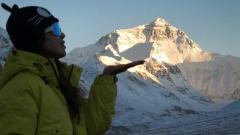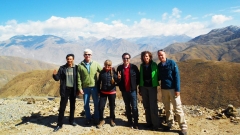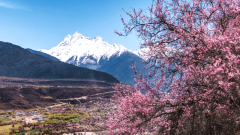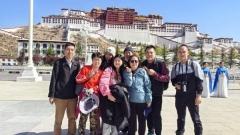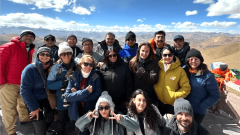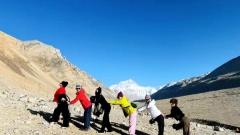Among the many mystical ideas that define Tibetan Buddhism, the concept of reincarnation—the continuous cycle of birth, death, and rebirth—is perhaps the most profound and intriguing. Known in Tibetan as “Tulku” or “Samsara”, this belief shapes not only the spiritual understanding of life and death but also the cultural, political, and religious fabric of Tibet itself.
In this article, China Dragon Travel invites you to explore how reincarnation became central to Tibetan Buddhism, how the search for reincarnated lamas works, and why this ancient idea continues to fascinate visitors and scholars from around the world.
1. The Philosophical Foundation of Reincarnation
The concept of reincarnation is deeply rooted in the broader Buddhist philosophy of karma and samsara. According to Buddhist teachings, every being experiences countless lifetimes, each shaped by their actions—good or bad—in the past.
In Tibetan Buddhism, this cycle of rebirth is not seen as random. Rather, it is a moral and spiritual process in which one’s intentions and deeds determine their next existence. Those who cultivate compassion, wisdom, and virtue may be reborn in higher realms, while ignorance and greed lead to lower ones.
Ultimately, the goal of all Buddhist practice is to liberate oneself from this endless cycle—to achieve nirvana, a state of perfect enlightenment and freedom from suffering.
2. Reincarnation and the Role of the Lama
One of the most distinctive features of Tibetan Buddhism is the reincarnation system of the lamas, especially the tradition of the Tulku. A Tulku is believed to be the reincarnation of a previous enlightened master who chooses to return to the world—not out of karma, but out of compassion—to continue guiding sentient beings.
The most famous example is, of course, the Dalai Lama, believed to be the reincarnation of Avalokiteshvara, the Bodhisattva of Compassion. Other well-known reincarnated lamas include the Panchen Lama and the Karmapa.
This tradition allows Tibetan Buddhism to maintain spiritual continuity across centuries. A lama’s body may perish, but their consciousness is believed to consciously choose the time, place, and circumstances of rebirth, ensuring their teachings continue unbroken.
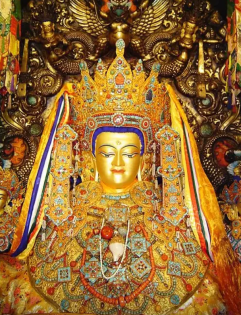
3. The Search for a Reincarnated Lama
The process of identifying a reincarnated lama is a fascinating blend of faith, ritual, and intuition—one that captures the imagination of people around the world.
After a great lama passes away, a search committee is formed, often guided by senior monks and oracles. They observe signs that might indicate the lama’s next rebirth, such as unusual weather, visions in sacred lakes like Lhamo Latso, or prophetic dreams.
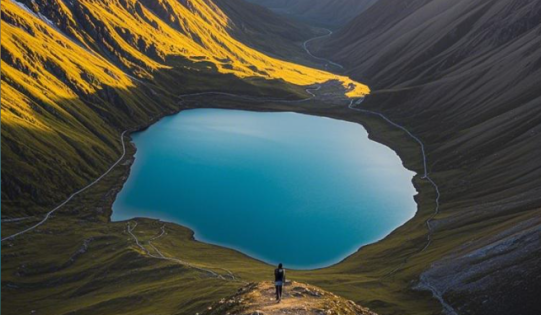
Lhamo Latso
When a potential child is found, they are tested using sacred objects—belongings of the previous lama mixed with others. If the child consistently recognizes the correct items and shows spiritual awareness, they are recognized as the new incarnation.
Once confirmed, the young Tulku is brought to a monastery for formal education, where they study Buddhist philosophy, meditation, and ritual until they mature into a spiritual leader.
4. The Meaning of Reincarnation for Tibetan Society
For Tibetans, reincarnation is not merely a spiritual concept; it’s a way of understanding the continuity of wisdom, compassion, and leadership.
Through the Tulku system, Tibet preserves its sacred teachings and lineage. Monasteries like Tashilhunpo, Drepung, and Sera have thrived for centuries because their leaders are seen as reincarnations of their predecessors, maintaining both authority and authenticity.
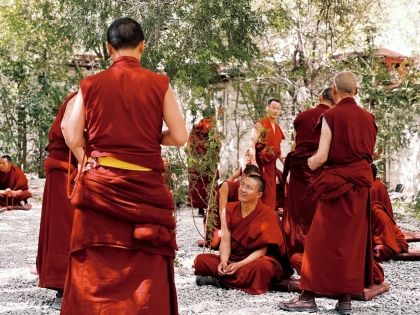
Sera Monks Debate
Beyond religion, reincarnation has also shaped Tibet’s political and cultural identity. The Dalai Lamas, for instance, served not only as spiritual leaders but also as the rulers of Tibet for centuries, blending the spiritual and temporal realms.
Even today, the question of reincarnation remains central to discussions about Tibetan leadership and cultural heritage.
5. The Spiritual Perspective: Lessons from Rebirth
To understand reincarnation in Tibetan Buddhism is also to reflect on life itself. Buddhists believe that recognizing the cycle of birth and death can awaken compassion and mindfulness.
Each moment becomes an opportunity to create better karma, to act with kindness, and to prepare the mind for its next journey. In this sense, reincarnation teaches that every action matters, and that our lives are interconnected across time and space.
Meditation on death and rebirth—known as “phowa” practice—helps practitioners confront impermanence and live with greater awareness. Pilgrims who visit Tibet’s sacred sites, such as Mount Kailash or Lake Manasarovar, often do so with the belief that such journeys can purify karma and improve their next life.
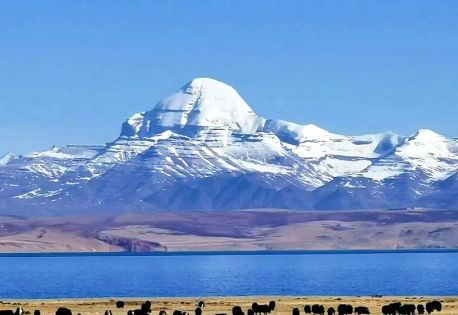
Lake Manasarovar
6. Reincarnation and Western Interpretation
In recent decades, the idea of reincarnation has attracted growing interest in the West. Many travelers who visit Tibet through China Dragon Travel express fascination with the calm, philosophical approach Tibetans take toward life and death.
Western scholars have studied the Tulku system extensively, while psychologists and spiritual seekers have explored reincarnation as a metaphor for personal growth and transformation.
For many, the Tibetan view offers a refreshing contrast to materialist thinking—it suggests that consciousness continues, that compassion has eternal value, and that every soul participates in a vast, interconnected cycle of existence.
7. Visiting Tibet: Experiencing Reincarnation Culture Firsthand
For those traveling to Tibet, the concept of reincarnation is not just a philosophical idea—it’s a living presence.
Visitors can witness this belief in action by exploring Tibet’s ancient monasteries, where murals depict the Wheel of Life (Bhavachakra), symbolizing the six realms of existence. In Lhasa, the Jokhang Temple remains a spiritual heart where pilgrims prostrate and chant mantras, seeking blessings for better rebirths.
At Tashilhunpo Monastery in Shigatse, travelers can learn about the Panchen Lama’s lineage, each reincarnation continuing the spiritual work of the previous. Meanwhile, at Sera Monastery, monks debate Buddhist philosophy—often centered on karma, impermanence, and the causes of rebirth.
China Dragon Travel offers guided tours that not only cover these historic landmarks but also help travelers understand their deeper meaning, allowing every visitor to connect with the spiritual rhythm of Tibet.
8. The Eternal Cycle: A Source of Peace and Hope
Ultimately, the Tibetan Buddhist view of reincarnation is not about fear of death—it is about continuity, compassion, and hope. It teaches that every life, no matter how small, is part of a greater cosmic journey.
The belief that enlightened beings return to help others gives Tibetans a sense of guidance and stability, even through centuries of change. It also inspires countless travelers to reflect on their own lives—on how kindness, wisdom, and love might carry forward beyond a single lifetime.
In a world often defined by uncertainty, the Tibetan concept of reincarnation reminds us that nothing is ever truly lost. The spirit continues, learning and evolving across infinite journeys.
Conclusion
Reincarnation lies at the heart of Tibetan spirituality—an enduring belief that connects the human soul to the universe in an infinite circle of compassion and wisdom. Whether you are a traveler seeking enlightenment, a student of philosophy, or simply someone curious about the mysteries of life, Tibet offers a chance to witness this timeless idea brought to life.
Join China Dragon Travel on a journey through Tibet’s sacred temples, tranquil monasteries, and profound spiritual traditions, and discover the peace that comes from understanding life as an eternal continuum.




